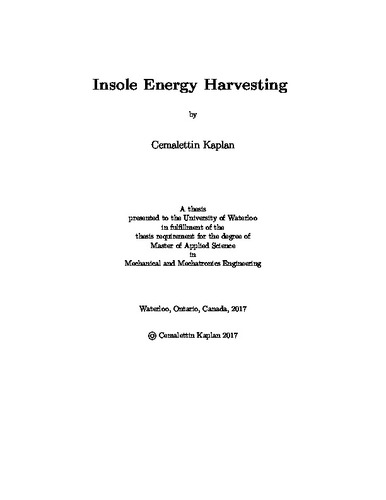| dc.description.abstract | Various energy harvesting techniques have been studied extensively to power portable
devices. Each technique has proven to have advantages and disadvantages. Generating
energy from human walking is an important energy harvesting application area. Piezoelectric
harvesters have come to dominate this area in the last decade, in particular, those that
employ polyvinylidene fluoride PVDF and PZT (Lead Zirconate Titanate). However, the
low power conversion efficiency of PVDF and durability limitations of PZT have hampered
the progress of insole energy harvesters This project is an attempt to generate new options
for insole energy harvesters to overcome those limitations. It compares the performance
of three classes of insole energy harvesters:
A baseline harvester employing Terpolymer of P(VDF-TrFE-CFE), a high durability
and high-efficiency piezoelectric polymer.
A harvester employing a newly developed ferroelectric material, cellular polypropylene
(PP).
A harvester employing a composite made of Terfenol-D, the magnetostrictive material,
and polyurethane, a soft polymer.
Insole energy harvesters were designed to convert to electrical energy the potential energy
(pressure) realized in the heel during the heel strike stage of walking. The harvesters
were fabricated and tested experimentally to measure their output power under identical
test conditions. Results show PP harvesters outperform all others. A non-laminated PP
harvester produced 617 µW output power under sinusoidal force at 2 g acceleration.
The project also analyzed the rectification and power management of output power.The
the efficiency of an off-the-shelf power management chip designed for energy harvesters, LTC3588-
1, was found to be less than 10% while that of a custom circuit made of silicon diodes and
a switching power supply was found to be better than 90%. Because the available power
is low, sub-milliwatt, it is important to match the impedance of the harvester to that of
the power management circuit, to minimize ON-resistance, and current backflows. | en |

